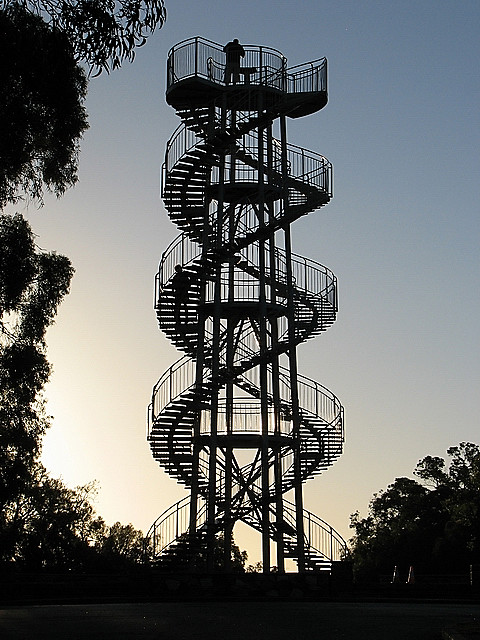Innovation’s Double Helix
 A technology without a market is as valuable as a market without a technology – they’re both worthless. At one end of the spectrum you have something interesting running in the lab and at the other you have an interesting insight around a new market. But one won’t do, and from either end of the rainbow your quest is to find the pot of gold at the other end.
A technology without a market is as valuable as a market without a technology – they’re both worthless. At one end of the spectrum you have something interesting running in the lab and at the other you have an interesting insight around a new market. But one won’t do, and from either end of the rainbow your quest is to find the pot of gold at the other end.
Scenario A – As a marketing leader you went out into the market, heard the unhearable, saw the unseeable and the gears of your mind gnashed and clunked until it brought into being a surprising insight. Now it’s time to come back to the technical community in search of a technology. For this clarity is key, but for technologists the voice of the customer is a foreign language, and worse, you’ve invented a new dialect.
Step 1. Dig up marketing literate for an existing product that’s the closest to satisfying your surprising market insight.
Step 2. In front of the technologists mark up the existing marketing literature so it satisfies the surprising insight. (Think – same as the old product, but different.) Starting with something they know and building from there helps the technologists see the newness from the grounded context of existing products and technologies.
Step 3. Then, with the technologists, draw a hand sketch of the customer using the new product in a new way, then underneath the sketch write a single sentence that describes the valuable customer outcome (from the customer’s perspective).
Step 4. Together with the technologists define the new design elements of the prouct to make the product perform like the sketch and satisfy the valuable customer outcome.
Step 5. With the technologists go out to the lab and make a prototype of the new design element, bolt it on to an existing product platform and use the product in the manner described in your sketch. If it doesn’t work as it should, modify the prototype until it does.
Step 6. Take the prototype to the market and ask them if it delivers on the valuable customer outcome. If it doesn’t, modify the prototype until it does. And when it does, launch it.
Scenario B – As a technologist you went out into the lab, thought the unthinkable, pondered the impossible and the gears of your mind gnashed and clunked until it brought into being a surprising technology. Now it’s time to come back to the marketing community in search of a market. For this clarity is key, but for marketing the voice of the technology is a foreign language, and worse, like your counterpart in Scenario A, you’ve invented a new dialect.
Step 1. Dig up the product spec for an existing product that’s closest to your new technology.
Step 2. In front of the marketers mark up the product spec so it describes the functionality of the new technology. (Think – same as the old product, but different.) Starting with something they know and building from there helps the marketers see the newness from the grounded context of existing products and technologies.
Step 3. Again in front of the marketers, define the new elements of the technology that make the product perform like it does.
Step 4. With the marketers, draw a hand sketch of the customer using the new product in a new way, then underneath the sketch write a single sentence that describes the valuable customer outcome (from the customer’s perspective).
Step 5. Together with the marketers and the prototype go out to the field and let customers use it as THEY see fit. If they use it in the manner described in your sketch, you’ve identified a potential customer segment. If they don’t, modify the sketch and valuable outcome sentence until it matches their use, or seek out other customers who use it like the sketch.
Step 6. Decide on the most interesting product use and customer outcome, and take the prototype to the target customers. Ask them if it delivers on the valuable customer outcome. If it doesn’t, investigate different customer segments until it does. And when it does, launch it.
Scenarios A and B are contrived. In scenario A, product use and valuable customer outcomes are static and the technology changes to fit them. In Scenario B, it’s reversed – static technology and dynamic product use and customer outcomes. While the scenarios are helpful to see the work from two perspectives and define the end points, that’s not how it happens.
Innovation is always a clustered-jumble of the two scenarios. In fact it’s more like a double helix where the customer strand winds around the technology and the technology strand winds around the customer. One strand takes the lead and mutates the other, which, in turn, spirals learning in unforseen directions.
There’s no getting around it – market and technology co-evolve. There’s no best practice, there’s no best orgainizational structure, and breaking things down the smallest elements won’t get you there.
Instead of spending time and money sequencing the innovation genome, take your cue from nature – try stuff and do more of what worked and less of what didn’t.
And remember the cardinal rule – the organization with the best genes wins.
Image credit – kool_skatkat
 Mike Shipulski
Mike Shipulski